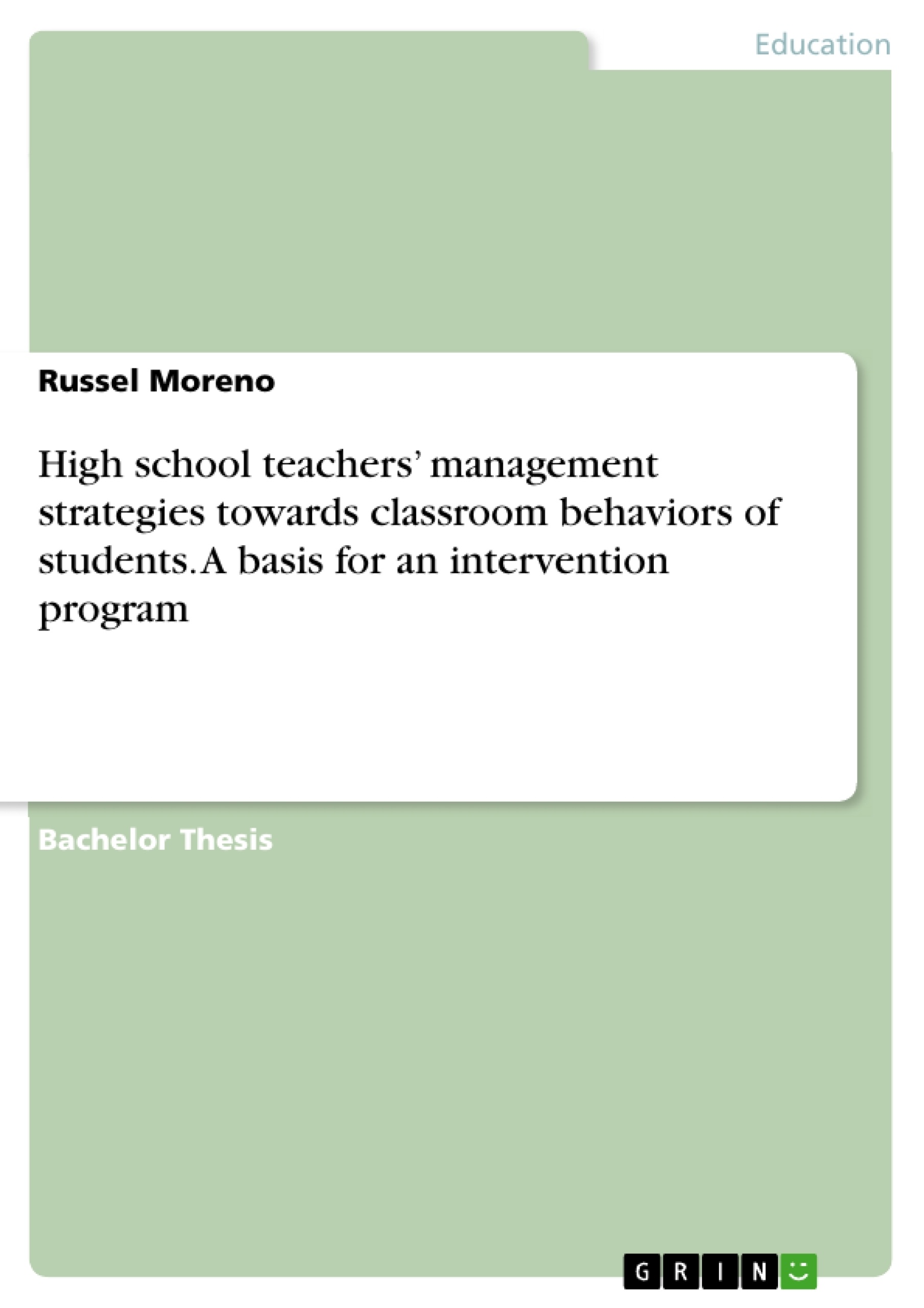The present study is about the secondary teachers’ management strategies regarding their students’ classroom behavior in Pilot and Lower-hetero sections in Manuel S. Enverga University Foundation Candelaria, Inc. within the school year 2014-2015.
This study has three important purposes: (1) to identify the behaviors of students in Pilot and Lower-hetero classes, (2) to determine the management strategies of teachers regarding their students’ classroom behavior and (3) to view the differences between the management of high school teachers regarding the behaviors of students in Pilot and Lower-hetero class. Moreover, the researcher aims to improve the managerial skills of teachers with the aid of the findings and able to use to develop an intervention program.
The respondents of the study are twenty four (24) faculty members of Secondary Education level in Manuel S. Enverga University Foundation Candelaria, Inc. and were chosen through the use of purposive sampling method. Criteria were set so that the researcher would come up with the appropriate number of respondents. Respondents were given two sets of questionnaires with the same contents: one for Pilot class and other is for Lower-hetero class. First part was designed to identify the behavior of students and the second was designed for the management of teachers in pilot and lowerhetero classes based on time, instruction, classroom environment, relation and discipline.
The researcher sought the permission of the administrator/school principal during the data gathering procedure. The questionnaire was administered, collected, tallied, tabulated and interpreted.
The study revealed that the students from pilot class are identified to be class achievers and the lower-hetero class is classroom helpers. Teachers, on the other hand, identified that both students from pilot and lower-hetero classes are exhibiting aggressive behaviors. Teachers also revealed that they ALWAYS manage their time, instruction, classroom environment, relation and discipline. In terms of differences, they revealed that there is SIGNIFANT DIFFERENCES in time and discipline with the t-computed values of 1.82 and 2.7 respectively. However, they found out that there is NO SIGNIFICANT DIFFERENCES in terms of instruction and relation with the t-computed values of 0.12 and 0.59 respectively and has NO DIFFERENCE in classroom environment with the t computed value of 0.
Inhaltsverzeichnis (Table of Contents)
- Abstract
- Acknowledgement
- Dedication
- Chapter I: Introduction
- Background of the Study
- Statement of the Problem
- Hypothesis
- Scope and Delimitation
- Significance of the Study
- Definition of Terms
- Chapter II: Review of Related Literature and Studies
- Foreign Literature
- Local Literature
- Foreign Studies
- Local Studies
- Synthesis of the Review of Related Literature and Studies
- Chapter III: Methodology
- Research Design
- Respondents of the Study
- Sampling Technique
- Instrumentation
- Data Gathering Procedure
- Data Analysis
- Chapter IV: Presentation, Analysis and Interpretation of Data
- Profile of the Respondents
- Student's Classroom Behavior
- Teachers' Management Strategies
- Differences in Teachers' Management Strategies
- Chapter V: Summary, Conclusions and Recommendations
- Summary of Findings
- Conclusions
- Recommendations
Zielsetzung und Themenschwerpunkte (Objectives and Key Themes)
This study aims to investigate the classroom management strategies employed by high school teachers in Pilot and Lower-hetero classes at Manuel S. Enverga University Foundation Candelaria, Inc. within the school year 2014-2015. The research seeks to identify the behavioral patterns of students in these classes, determine the specific management strategies employed by teachers, and analyze any differences in management approaches between the two class types. This research will use the findings to develop an intervention program for enhancing teachers' management skills.
- Classroom Management Strategies
- Student Classroom Behavior
- Pilot and Lower-hetero Class Differences
- Intervention Program Development
- Teacher Management Skill Enhancement
Zusammenfassung der Kapitel (Chapter Summaries)
- Chapter I: Introduction This chapter sets the stage for the study by providing background information, outlining the research problem, formulating hypotheses, defining the scope and delimitation, highlighting the significance of the study, and defining key terms.
- Chapter II: Review of Related Literature and Studies This chapter delves into existing research and literature related to the topic. It covers both foreign and local literature and studies, culminating in a synthesis of the reviewed information.
- Chapter III: Methodology This chapter details the research methodology used in the study, including the research design, selection of participants, sampling technique, data collection instruments, data gathering procedure, and data analysis methods.
- Chapter IV: Presentation, Analysis and Interpretation of Data This chapter presents and analyzes the collected data, focusing on the profile of respondents, students' classroom behaviors, teachers' management strategies, and any significant differences observed in these strategies.
Schlüsselwörter (Keywords)
This research focuses on the key concepts of classroom management strategies, student classroom behavior, pilot and lower-hetero classes, intervention program development, and teacher management skill enhancement. The study explores the differences in management approaches employed by teachers for different class types and aims to utilize the findings to improve teacher management skills.
- Citation du texte
- Bachelor of Secondary Education Russel Moreno (Auteur), 2015, High school teachers’ management strategies towards classroom behaviors of students. A basis for an intervention program, Munich, GRIN Verlag, https://www.grin.com/document/345458



